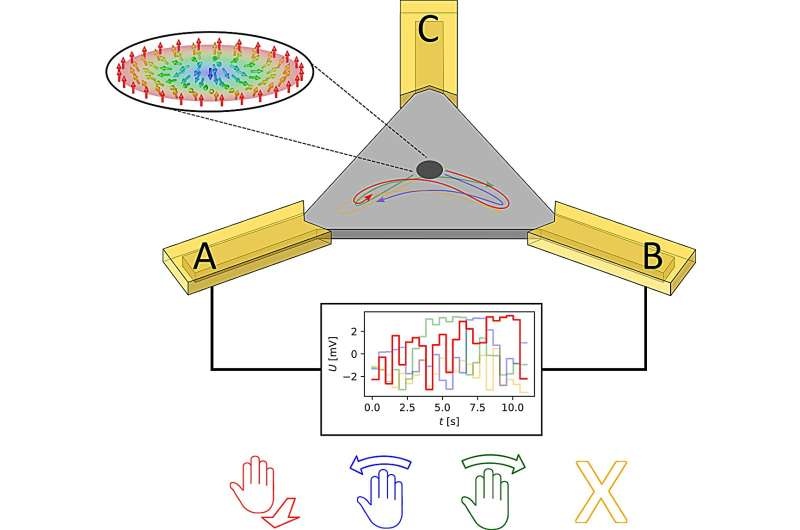Researchers at Johannes Gutenberg University Mainz have developed an innovative energy-saving computing system that uses magnetic skyrmions to detect hand gestures with high accuracy, outperforming traditional neural network-based solutions.

Skyrmions Are the Next Big Thing for Computing
Skyrmions — chiral magnetic whirls — have been studied for a long time as possible candidates for data storage and computing.
Now, researchers have devised a way to harness these distinctive magnetic structures in a new type of computing component called Brownian reservoir computing.
The complex motions of skyrmions within a multilayered thin film are exploited here as an energy-efficient alternative for hand gesture detection and recognition rather than energy-intensive neural networks.
The system can analyze the data in real-time, without requiring significant training, by feeding radar data directly into the reservoir. This makes it an extremely efficient solution as compared to usual software based method.
Precisely Reading Gestures
Using Doppler radar, the researchers measured basic hand movements like swiping left or right and converted that data into voltages which were inputted to the Brownian reservoir.
Through detecting the complex motions due to the input signals and correlating these with the motion of skyrmions in a triangular reservoir, manipulation by hand gestures can be deduced.
A Brownian reservoir computing system provides comparable or even better recognition accuracy compared to a software-based neural network approach in recognizing the arm positions where gestures corresponding to an awake state with complete hand relaxation and the same flexible finger position (finger flex) are performed, as shown in Fig.
Additionally, the hardware-based approach is enormously favorable with regards to energy efficiency because using skyrmions eliminates a necessity for high currents that are used when moving ones and zeroes as in today’s power-hungry software counterparts.
Conclusion
These findings offer a new avenue for the development and testing of magnetic skyrmions as an energy-efficient tool to address semiconductor spintronic interfaces, making skyrmion-based computing all the more viable. Thanks to the special properties of these chiral magnetic whirls, the team has created an effective and energy-saving system for gesture recognition. In the context of increasing need for sustainability in the computing industry, this is a crucial next step towards sustainable and skyrmion-controlled computing.
